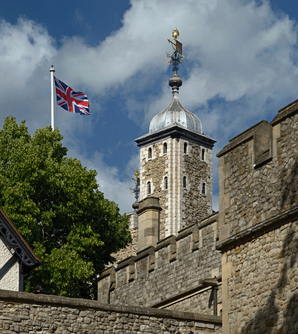The Tower of London, a historic castle and fortress on the north bank of the River Thames in central London, attracts millions of visitors annually. In 2023, the Tower welcomed 2,790,280 visitors, marking a significant 38% increase from 2021 and a 28% rise from 2022. This iconic landmark continues to be one of England’s top paid-for attractions, drawing both domestic and international tourists despite recent global challenges.
How Has the Tower of London’s Visitor Count Evolved?

The Tower of London has experienced fluctuating visitor numbers over the years:
- 2023: 2,790,280 visitors
- 2022: 2,181,707 visitors
- 2021: Approximately 2,022,667 visitors (estimated based on percentage increases)
This trend shows a steady recovery from the pandemic-induced slump, with each year seeing a significant increase in visitor numbers.
What Factors Influence Annual Visitor Numbers?

Several factors contribute to the Tower of London’s visitor statistics:
-
Global Events: The COVID-19 pandemic significantly impacted visitor numbers, causing a sharp decline followed by a gradual recovery.
-
Tourism Trends: As international travel rebounds, the Tower benefits from increased overseas visitors to London.
-
Marketing and Promotions: Special exhibitions and events can drive additional foot traffic.
-
Historical Significance: The Tower’s rich history and cultural importance continue to attract history enthusiasts and tourists alike.
-
Location: Its central London location makes it easily accessible to both domestic and international visitors.
How Does the Tower Compare to Other London Attractions?
The Tower of London consistently ranks among the top paid-for attractions in England. Here’s a comparison with other popular London sites (2023 figures):
| Attraction | Visitors |
|---|---|
| Tower of London | 2,790,280 |
| St Paul’s Cathedral | 1,744,608 |
| Westminster Abbey | 1,651,962 |
| Royal Museums Greenwich | 2,409,854 |
While the Tower leads in this group, it’s worth noting that free attractions like the British Museum and Tate Modern typically draw even larger crowds.
What Economic Impact Do Tower Visitors Have?
The economic impact of Tower of London visitors is substantial:
- International visitors to London spent £16.70 billion in 2023, an 18% increase from 2022.
- Tower visitors contribute to this spending through ticket sales, nearby accommodations, local dining, and souvenir purchases.
- The attraction supports local employment in tourism, hospitality, and related sectors.
How Has the Pandemic Affected Visitor Numbers?
The COVID-19 pandemic had a significant impact on the Tower’s visitor numbers:
- Pre-pandemic (2019): Visitor numbers were at their peak
- 2020-2021: Sharp decline due to lockdowns and travel restrictions
- 2022-2023: Steady recovery, with 2023 figures still 28% below 2019 levels
This pattern reflects the broader trends in London’s tourism industry during and after the pandemic.
What Demographics Visit the Tower of London?
While detailed demographic data is not publicly available, we can infer some characteristics of Tower visitors:
- International Tourists: A significant portion, given London’s status as a global destination
- Domestic Visitors: UK residents, including school groups and history enthusiasts
- Age Range: Likely broad, from children to seniors, given the Tower’s universal appeal
- Education Level: Possibly skewed towards those interested in history and culture
How Do Seasonal Variations Affect Visitor Numbers?
The Tower of London experiences seasonal fluctuations in visitor numbers:
- Peak Season: Summer months (June-August) typically see the highest visitor numbers
- Shoulder Seasons: Spring (April-May) and Autumn (September-October) attract moderate crowds
- Off-Season: Winter months (November-March) generally have lower visitor numbers, except for holiday periods
These variations can impact wait times, ticket availability, and overall visitor experience.
What Future Projections Exist for Tower Visitors?
While specific projections are not available, several factors suggest potential growth in visitor numbers:
- Continued recovery from the pandemic
- Increasing global tourism trends
- Ongoing popularity of London as a tourist destination
- Potential for new exhibitions or attractions within the Tower
However, factors like global economic conditions and travel trends could influence these projections.
In conclusion, the Tower of London continues to be a major draw for visitors to the UK capital, with its visitor numbers reflecting both global events and the enduring appeal of this historic landmark. As tourism continues to recover, the Tower is likely to see further increases in annual visitor numbers, reinforcing its status as one of England’s premier attractions.
References:
1. https://www.visitbritain.org/research-insights/england-visitor-attractions-latest
2. https://www.alva.org.uk/details.cfm?p=423
3. https://roadgenius.com/statistics/tourism/uk/london/
